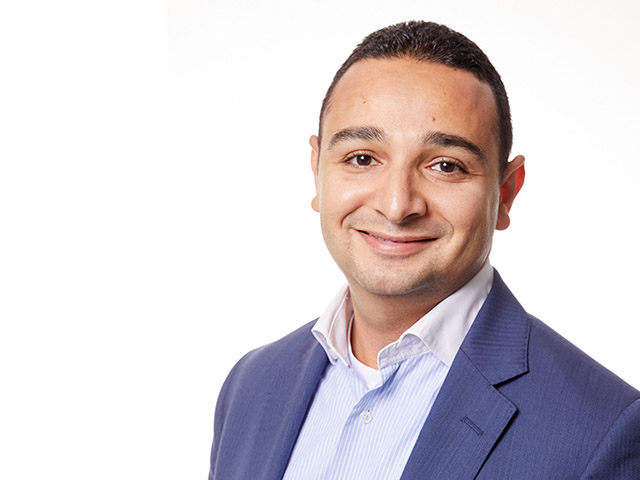Marwan Abouzeid, Senior Manager of Solutions Consulting, Finastra
Banks cannot be everything to everyone. There are limits within formal banking environments that make it difficult for these financial institutions to serve all customers. For instance, many people seeking loans or favourable savings products struggle to provide collateral or afford the fees that would satisfy the regulations and requirements governing a traditional financial institution.
Those individuals often turn to alternatives, such as Micro-Finance Institutions (MFIs) and Savings and Credit Cooperative Societies (SACCOs). In fact, MFIs and SACCOs are very popular across the developing world, where Africa and Asia alone account for almost 90% of the total number of credit unions worldwide. As of 2019, there were around 39,600 credit unions in Africa and around 33,600 in Asia.
Both SACCOs and MFIs provide a compelling alternative to other mainstream financial service providers. Customers of these groups gain benefits they can't access at traditional banks - especially in regard to lending. Many people do not meet the loan requirements of a bank, such as having an ‘on file’ credit history or the right personal documentation, and loan conditions can be expensive and inflexible. On the other hand, they don't want to deal with moneylenders and unregulated loan sharks. SACCOs and MFIs are the trusted option for such customers.
SACCOs and MFIs are often embedded within their communities, and in the case of a SACCO, they are a non-profit member-owned institution where the individuals receiving the service are often also shareholders. They can provide micro-loans and operate on a much more personal level to offer flexible terms. These groups do not have the same Know Your Customer (KYC) requirements as traditional banks and they often serve customers from the informal sector who do not fit the profile required by financial services incumbents.
SACCOs are not only small rural operations, but some have also reached massive scale and popularity. For example, the Kenyan based Police SACCO currently has over 52,000 members. These organisations have aided many small businesses and entrepreneurs in informal economies to get started through funding options.
The digitisation gap
However, these organisations risk losing ground and customers. Aggressive digitisation by banks, telco operators and fintech start-ups is lowering the barriers to financial services. It's not (yet) a wholesale shift, as many people still find their options very limited. However, customers can now enjoy more access through the conveniences of digital services, such as remote mobile banking and lower fees stemming from digitised processes. And MFIs and SACCOs, which operate on thinner margins, are starting to feel the pinch.
The slower adoption of digital services by these groups may have a long-term impact on their popularity. Many members that previously used such groups for most of their financial needs, are starting to move to other providers for convenient day-to-day transactions such as transfers and payments, and only use MFIs or SACCOs for specific requirements such as lending.
Efficiency and access lie at the heart of the problem, as most MFIs and SACCOs groups still rely heavily on paper-based processes, costing them money and limiting their reach with customers. It also amplifies their risks: with limited liquidity, defaulting customers can quickly make it hard to maintain operations. Additionally, complying with regulations is much more challenging.
This, combined with a generally riskier customer base, can put a lot of pressure on their financial resources. And since many of their potential customers are in rural areas, it's expensive to enrol new ones.
Imagine what a SACCO or MFI agent can achieve if they could do all of their customer onboarding on the road with a tablet device?
Helping with SaaS
Previously, traditional financial institutions could not affordably and effectively serve those outlying customers. Yet now, SACCOs and MFIs are struggling to digitise in the ways banks are. Digitisation can be very expensive, especially in financial services. As SACCOs and MFIs often operate on a small scale, this limits them from making such substantial initial investments in technology. And today they are having to compete with digitising banks, telcos and rising fintech stars threatening to take many of their customers.
While many SACCOs and MFIs don't have the resources to implement these digital solutions by themselves, there is an alternative. The majority of these groups favour a revenue-sharing model with an appropriate banking technology platform, using the ‘as a Service’ approach to keep their initial investment costs down.
Rather than buy everything upfront, SACCOs and MFIs can subscribe to technology services – Software as a Service (SaaS) - to gain access to digital platforms. They can then use these solutions to design and deploy loan and savings products that work for their customers, such as flexible micro-loans or group savings accounts. They can also use the same platform for digital onboarding and mobile apps.
The benefit of accessing SaaS is not only from a cost perspective, but also from a resourcing one. Tapping into shared technology platforms eliminates the need for these groups to ramp up their technical expertise and investment in IT infrastructure, which promotes cost savings, but more importantly allows them to focus on the more important aspects of the business.
SaaS platforms give SACCOs and MFIs a way to digitise without taking on enormous costs. While many experts wonder how financial services will reach an estimated 1.4 billion unbanked people across the globe, SACCOs and MFIs are already leading the way. And they can continue that journey and reach more of the unbanked if they can digitise.
If SACCOs and MFIs can leverage shared banking platforms through a subscription-based pricing or revenue sharing model, they can again take the centre stage in providing financial services to places where other financial institutions cannot.





